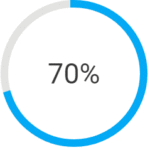By incorporating pollinator flowers in your garden plan, you can create a dynamic and vibrant spaces that not only attract bees, butterflies, and birds, but also significantly enhance the aesthetic appeal of your outdoor living spaces. These flowers not only serve as a critical food source for pollinators but also contribute to a visually stunning garden.
But first some basics. Pollinators are all insects and other animals that aid in the transport of pollen from male parts of the flower to male parts of the same or other flowers. Pollen movement must happen before plants grow fertile and produce fruit seeds and mature plants. Sometimes pollinators feed from and pollinate many species of plants, but often a pollinator insect will specialize and depend on a single species.
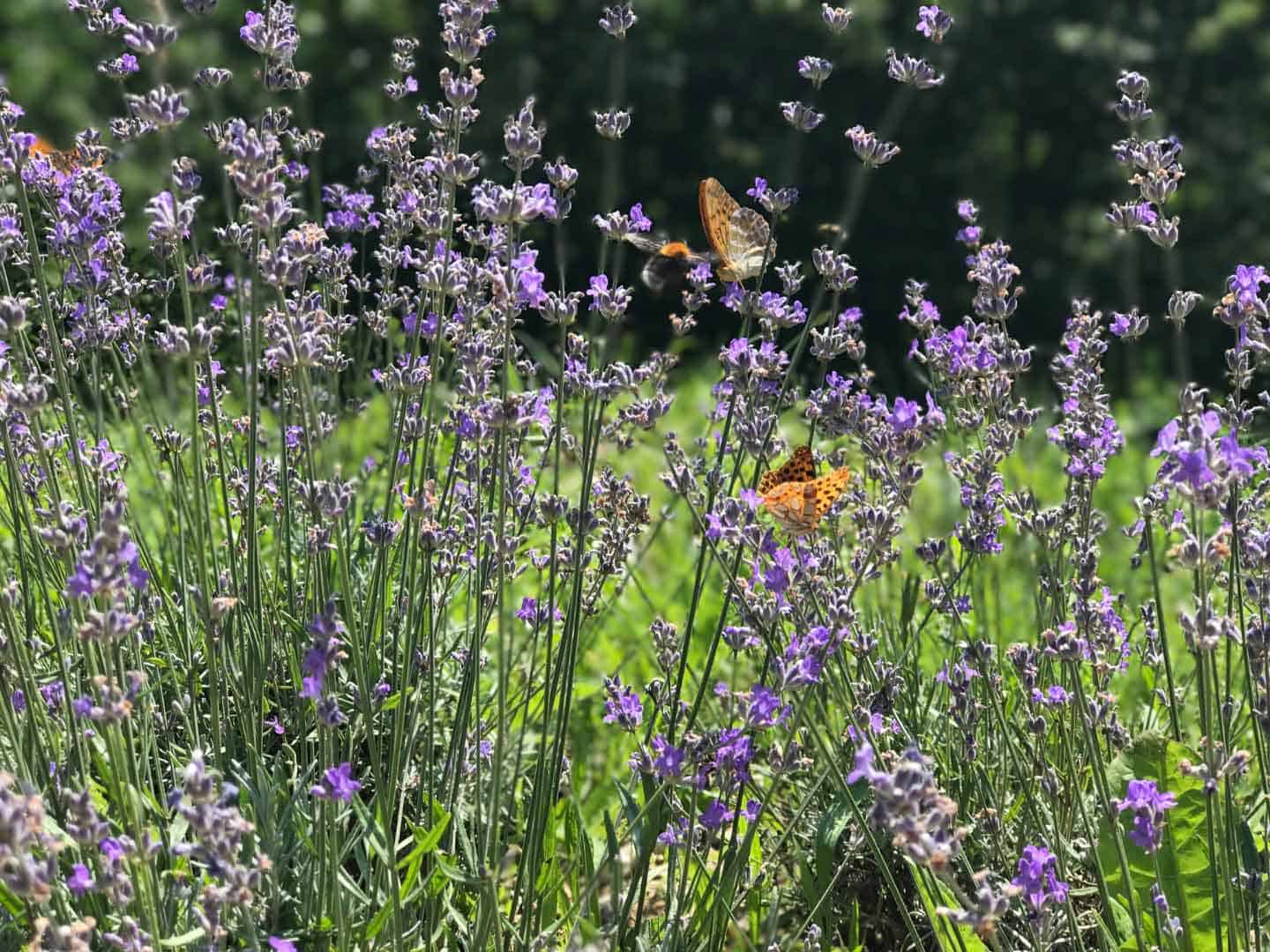
In the midst of the natural competition for resources, it’s wise to add plants that attract birds to your backyard. Some plants draw birds with their nectar or pollen, others attract insects which serve as food during the summer, and some yield plentiful seeds that birds feast on during the winter and fall seasons. Consider planting native vegetation in your backyard that hosts the insects upon which local wildlife depends for nourishment. It’s also beneficial to include plants that bloom in different seasons, thereby providing nutritional advantages to birds all year long.
Key Takeaways
- Build a garden that encourages pollinators to support both ecosystems and food crops, while relishing the varied beauty of wild flowers.
- Plant perennial favorites like coneflowers, bee balm and blazing star for long-lasting blooms that attract beneficial insects.
- Incorporate late season blooms such as asters, goldenrod and Joe Pye Weed to help pollinators thrive all season long!
Why Pollinator Flowers Matter
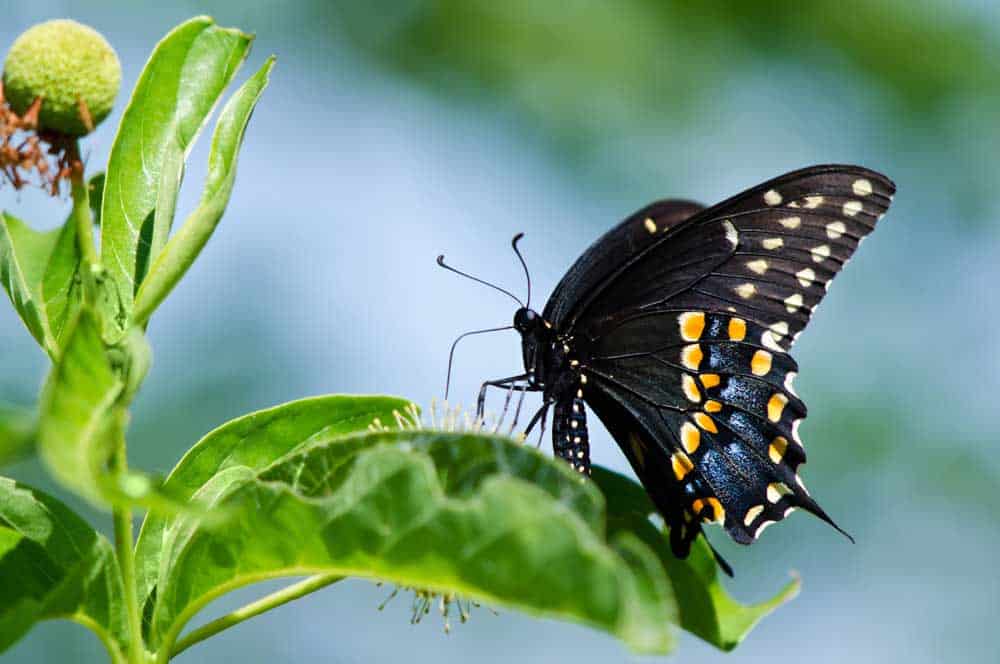
Pollinators such as bees, butterflies and birds are key to the survival of ecosystems and food crops. Their presence is essential for many plants’ reproduction, yet their numbers have been dropping due to habitat loss. Thus planting flowers that attract them can play a significant role in preserving both these pollinator populations and our environment’s wellbeing overall.
By fostering a garden that provides nourishing nectar through its blooms, you will create a sanctuary brimming with a variety of invertebrates and animals. Not only will your garden be a feast for the eyes, but it will also pulse with life! This conscious decision aids in maintaining balance among nature’s elements by offering the necessary sustenance for conservation efforts in areas like food production, and more. In the end, you reap the rewards of a deeper connection with nature, while enjoying the sight of beautiful blooms and supporting the health of the planet on a larger scale – talk about a win-win situation, right?
Choosing the Right Plants to Attract Pollinators
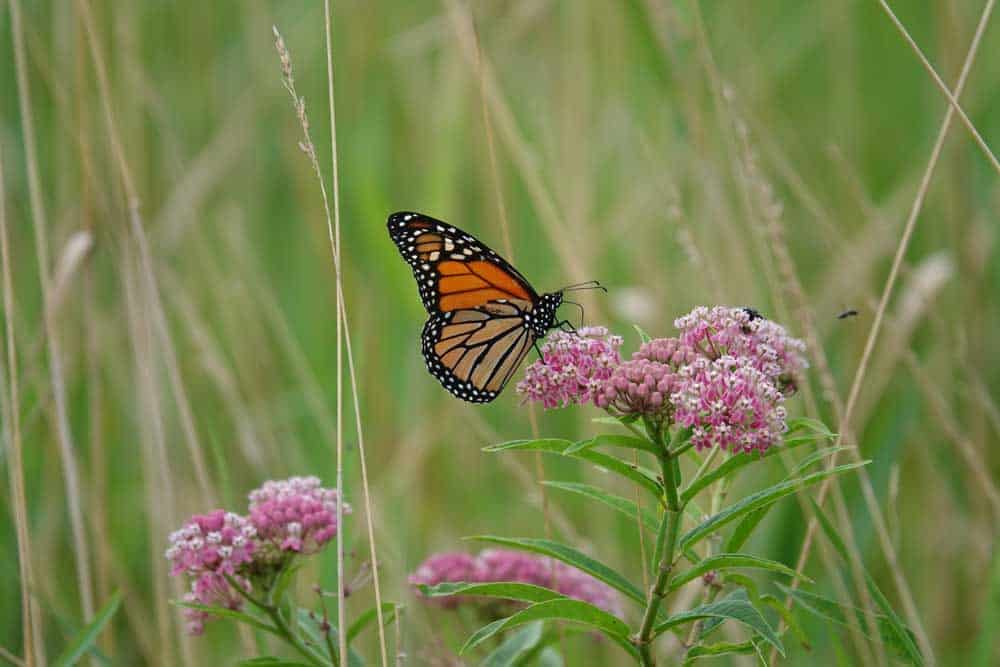
Choosing the optimum pollinator plants does not have to be challenging, as there are several elements that can provide direction. When making your choices, here are a few things to consider: the plant’s native status (native plants in general support more local native pollinators), flower color, shape of blossom, aroma, and especially the time of bloom. Ideally you want a mix of pollinator plants that provide blooms and nectar over the entire growing season, since some plants bloom for only a month or two. The attractive hues, special shapes and fragrant foliage pull in a variety of native and non-native bees, bumblebees, butterflies and moths, and pollinating birds.
Perennial Pollinator Favorites

Goldenrod (Solidago spp.), Joe-Pye weed (Eutrochium purpureum), Black-Eyed susan (Rudbeckia hirta), Asters (Symphyotrichum spp.), Coneflower (Echinacea spp.), Salvia (Salvia spp.), and Sunflowers (Helianthus spp.) are renowned among pollinators for their enduring blossoms. These perennials offer many benefits to the garden environment by supporting a thriving ecosystem of various species of pollinators. Knowing why these plants hold such high regard allows us to better understand how they nurture our gardens!
Coneflowers
Coneflowers (Echinacea spp.), a lovely native floral species adored by bees and butterflies alike, flourish in the late summer months. Basking in the full sun, with their gorgeous blooms, they attract an array of pollinators such as monarchs, fritillaries, swallowtails and painted ladies. Not only that, but from early fall and into winter these flowers offer birds a nutritious source from its seed heads to thrive on throughout those seasons’ weather conditions.
Bee Balm, Also Known as Wild Bergamot
Bee Balm (Monarda spp.) is a vibrant native plant, highly attractive to honey bees and native bees, butterflies, and hummingbirds, with tubular flowers in shades of pink, red, purple, and white. It blooms from early to late summer, providing essential nectar during these months. Thriving in full to partial sun and moist, well-drained soils, Bee Balm is versatile and supports local biodiversity. While it can be prone to powdery mildew, selecting mildew-resistant varieties and ensuring good air circulation can mitigate this issue. Its medicinal and culinary uses add to its appeal, making it a valuable addition to any pollinator-friendly garden.
Penstemon
Often known as beardtongues, Penstemons are a diverse group with many species native to various parts of North America. They are particularly loved by hummingbirds and bees for their tubular flowers, which come in shades of blue, purple, red, and pink. Penstemons generally prefer well-drained soil and are quite drought tolerant once established. They thrive in full to partial sun and bloom from late spring to early summer.
Blazing Star
Blazing Star, or Liatris spicata, is a striking native perennial known for its tall, spikey purple flowers that bloom from top to bottom, attracting a myriad of pollinators like bees, butterflies, and hummingbirds. It typically flowers in late summer to fall, offering a vital nectar source when many other plants have finished blooming. Well-suited to full sun and well-drained soils, Blazing Star is drought-tolerant once established and adds vertical interest to gardens. Its low maintenance and resistance to deer and pests make it a favorite among gardeners. The unique shape and purple flowers make Blazing Star a standout in any native plant garden or naturalized area.
Annual All-Stars for Pollinators
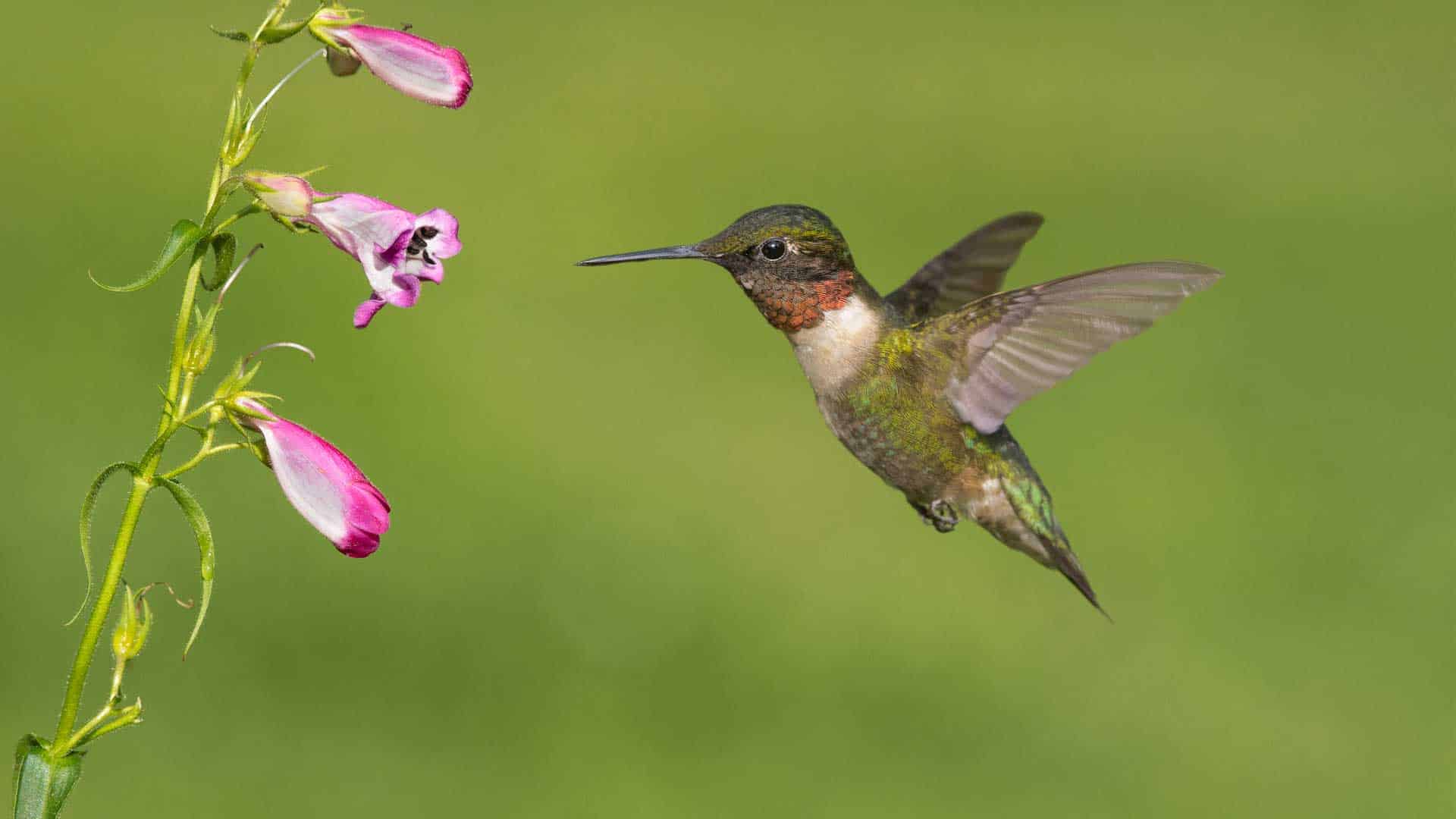
Annual plants make a huge contribution to creating and sustaining an inviting home for pollinators like bumblebees, butterflies, hummingbirds, moths etc. Colorful flowers like partridge peas, sunflowers or coreopsis can be quite beautiful in your garden while providing the necessary nectar and pollen these insects require. It’s worth delving deeper into these annuals to understand their role in cultivating lively gardens that attract a diverse range of pollinators.
Sunflowers
Sunflower (Helianthus spp.): Sunflowers are iconic for their large, bright yellow blooms that are highly attractive to bees, butterflies, and even birds. These native annuals are excellent for providing nectar and pollen for a variety of pollinators, and their seeds are a valuable food source for birds in the fall.
Partridge Pea
Partridge Pea (Chamaecrista fasciculata): This native annual is known for its bright yellow flowers and fine-textured foliage. It’s a legume, which means it can improve soil health by fixing nitrogen. Partridge Pea is particularly attractive to a variety of bees and butterflies, including some specialized native bees.
Mexican Sunflower
Mexican Sunflower (Tithonia rotundifolia): Although “Mexican” in name, this plant is native to parts of the southwestern United States and Mexico. It’s a magnet for pollinators, especially monarch butterflies, bees, and hummingbirds. Mexican Sunflower features vibrant orange or yellow flowers and can grow quite tall, making it an excellent backdrop for a pollinator garden.
Rocky Mountain Bee Plant
The Rocky Mountain Beeplant, scientifically known as Cleome serrulata, is an excellent choice for a western pollinator garden. It’s highly attractive to bees, butterflies, and other beneficial insects, thanks to its abundant nectar production. This plant boasts a lengthy blooming period from mid-summer to early fall, providing essential nectar during a crucial time for pollinators. It’s adaptable to various soil types, thriving in dry, well-drained conditions and full sun. Additionally, its vibrant pink or purple flowers and unique foliage add aesthetic appeal to gardens, while attracting beneficial insects.
Coreopsis
Coreopsis (Coreopsis tinctoria): Also known as Plains Coreopsis or Golden Tickseed, this plant is native to the United States and is a prolific bloomer, producing daisy-like flowers with yellow petals and a maroon center. It’s lovely flowers are highly attractive to a variety of pollinators, including bees and butterflies.
Native Flowering Plants with Pollinator Appeal
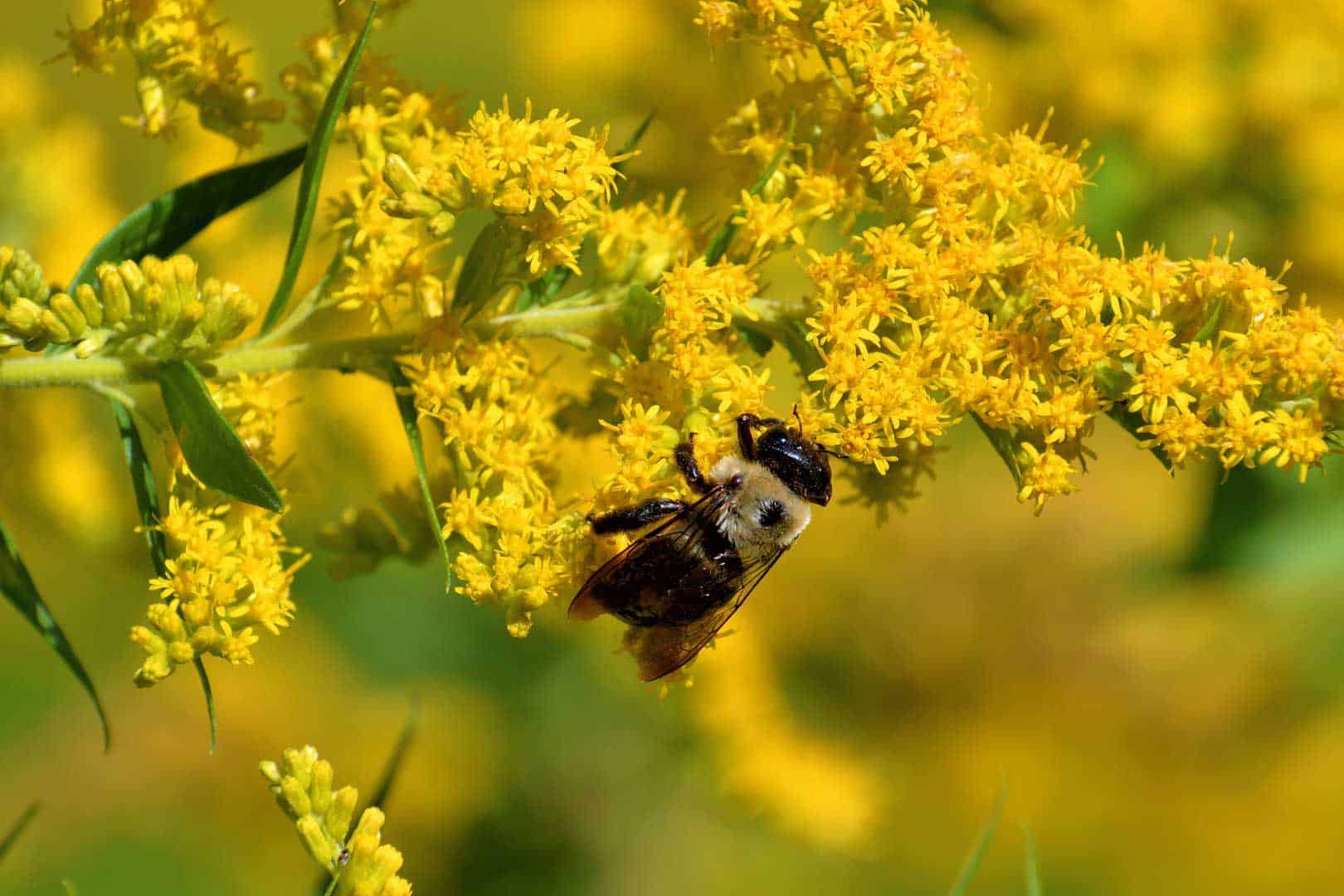
Native plants are naturally designed to coexist with local pollinators. Examples of such plants include milkweed, wild geranium, and goldenrod. These plants provide essential nourishment for local bees, butterflies, and birds. Understanding the significant role these indigenous pollinator-friendly plants play in supporting the existing pollinator populations can be extremely beneficial. Understanding how much these homegrown pollinator havens aid existing pollinator populations can be very beneficial. Native bees, along with other insects such as butterflies and months, hoverflies, wasps and ants need a diverse mix of plants in order to survive, and without our help their very existence may threatened. Gardening with an eye toward establishing areas composed mainly out of indigenous flora boosts chances that it will provide food sources and safe homes for both hummingbirds as well as invertebrate pollinators.
Milkweed
Native plants such as milkweed are a boon for the local ecosystem, providing a significant source of nourishment for the larvae of monarch butterflies, while its nectar-rich flowers are a hit with bees and other pollinators. Incorporating these plants into your garden not only enhances its aesthetic appeal but also supports the survival and thriving of these fascinating creatures. The vibrant clusters of flowers on milkweed plants offer an abundant source of nectar, making them an excellent addition to any garden. The presence of milkweed in a garden can significantly contribute to the wellbeing of various organisms.
Goldenrod
Goldenrod is a native species that supplies nectar and pollen to bees, butterflies, and other beneficial insects during the later part of the growing season. Its cheery yellow blooms bring beauty and color to gardens while nurturing pollinators in autumn.
Adding goldenrod to your garden produces an abundant atmosphere for plants throughout all stages of growth.
Wild Geranium
Wild Geranium, a native perennial flower, is an excellent choice for gardens aiming to draw bees and other pollinators. Its vibrant blooms don’t just catch the eye, but also provide crucial nectar and pollen that butterflies, bees, and other buzz-loving visitors find irresistible.
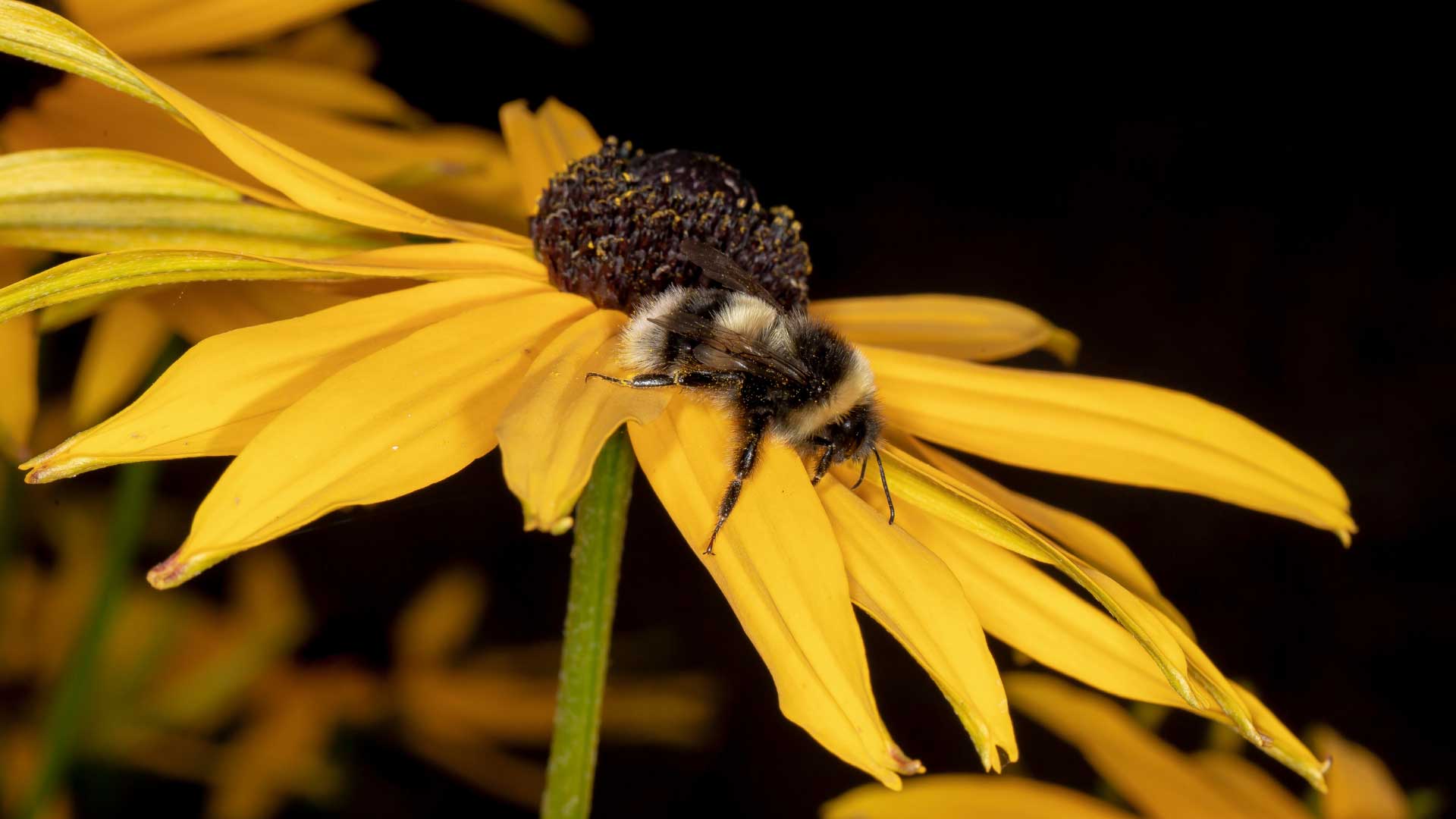
Black-eyed Susan
This cheerful, bright yellow flower with a dark center is a classic in native gardens. Black-eyed Susans are loved by bees and butterflies for their nectar. They thrive in full sun and can adapt to a variety of soil conditions, making them a versatile choice for different garden settings. Their long blooming period, usually from June to October, ensures a consistent food source for pollinators throughout the growing season.
Herbs for a Garden Buzzing with Native Bees
Adding herbs to your pollinator-friendly garden is a brilliant strategy to aid these essential creatures. Beneficial plants such as chives, sage, and mint not only have medicinal properties but also act as a magnet for bees.
Discovering how these herbs can transform a regular herb garden into a vibrant haven teeming with life is quite thrilling!
Chives
Chives make a fantastic addition to any garden aimed at attracting bees. The nectar-filled flowers of this herb are a major draw for bees and other pollinators, offering them a tasty treat. But the rewards of planting chives don’t stop at supporting pollinators – you also get to enjoy the aromatic flavor of chives in your cooking! These vibrant flowers not only feed the bees but also spice up your meals.
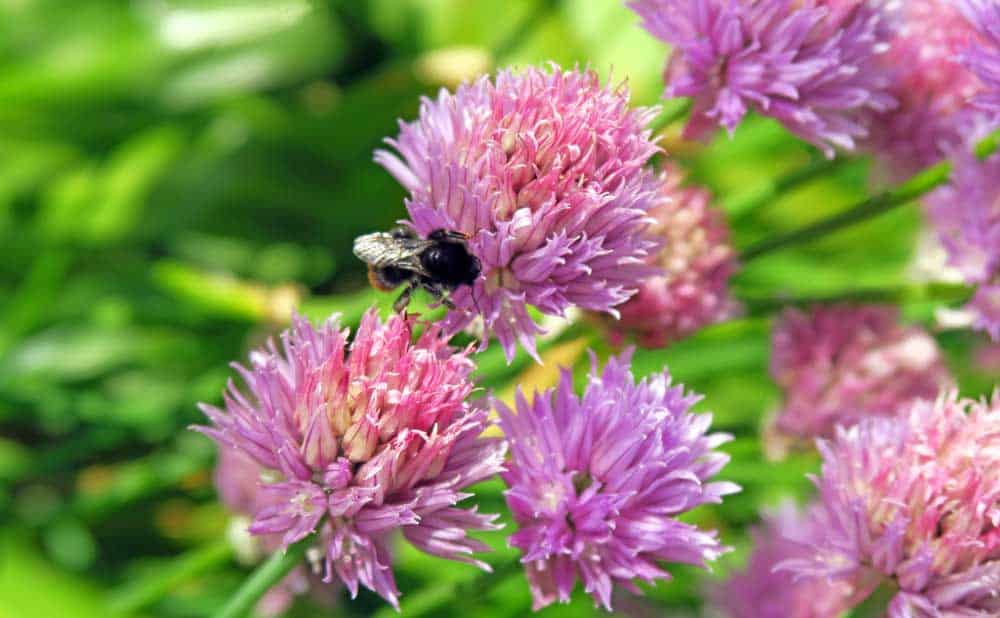
Sage
Sage is a fragrant plant with attractive flowers that draw in bees and has many culinary uses. It’s an ideal addition to any pollinator-friendly garden, producing the nectar-laden blossoms for which it is known.
Not only does growing sage provide sustenance for pollinator populations, but it was historical a key ingredient in food and medicines for several Native American tribes.
Mint
Integrating mint into your garden creates a welcoming habitat for bees, butterflies, and other pollinators. The flowers of this herb, rich in nectar, serve as an ideal food source and also add a delightful flavor to culinary dishes!
Shrubs and Trees for Pollinator Support
Trees and shrubs are not just for show, they also play a significant role in supporting pollinators like bees and butterflies. Some of the most beneficial ones include dogwoods, chokeberry bush, and oakleaf hydrangea. Diving deeper into how these can be integrated into your garden can be a game-changer in enhancing its appeal to pollinators!
Dogwoods
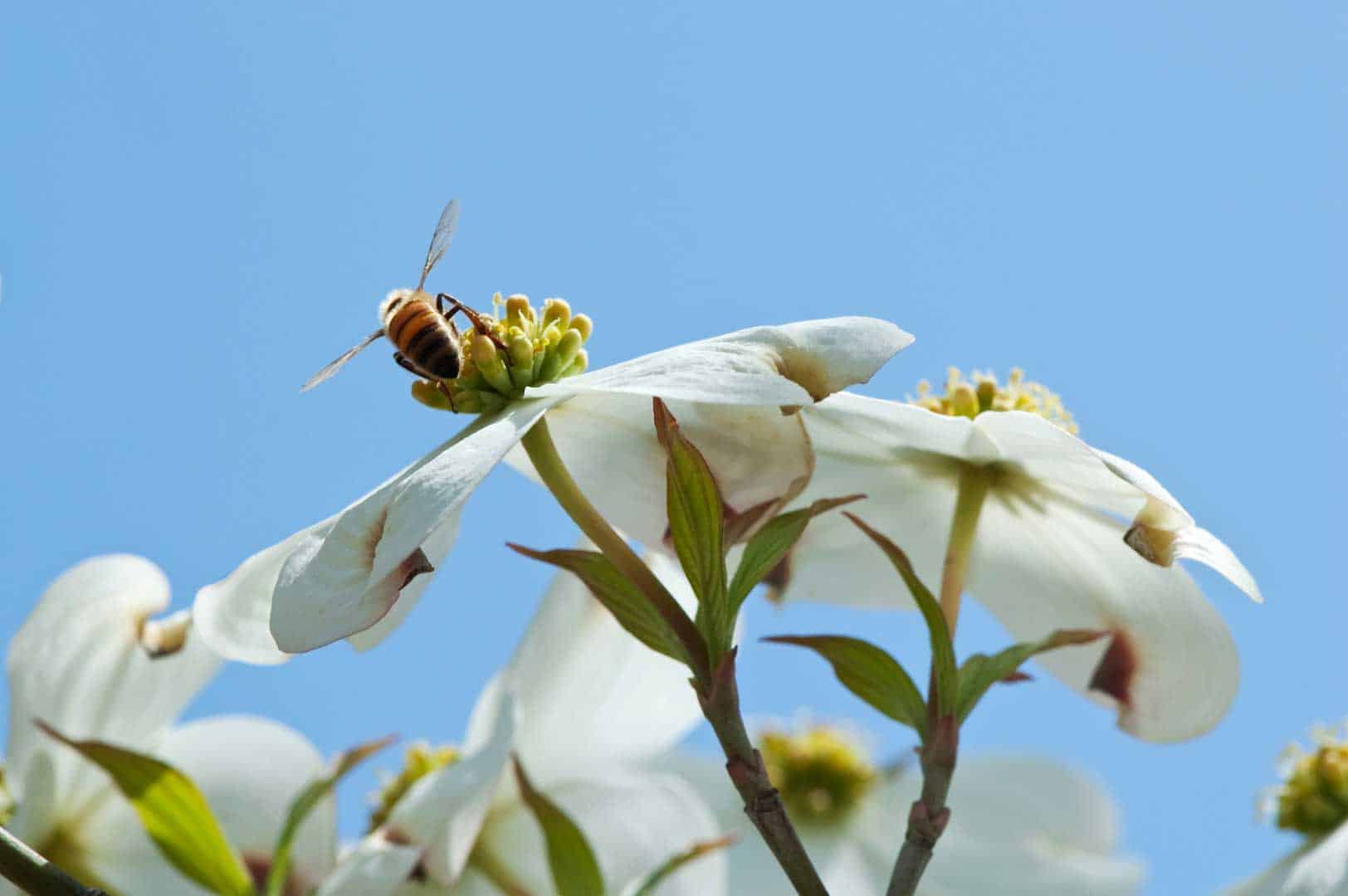
Dogwoods are a fantastic choice for those looking to create a pollinator-friendly garden. These trees not only produce an array of lovely flowers that are sure to beautify any outdoor space, but they also provide an abundance of petals and pollen that serve as a veritable feast for pollinators. Moreover, their berries provide nourishment for other wildlife. By planting dogwood trees, you’re not only enhancing your garden’s visual appeal, but you’re also contributing to the health and diversity of your local ecosystem.
Chokeberry
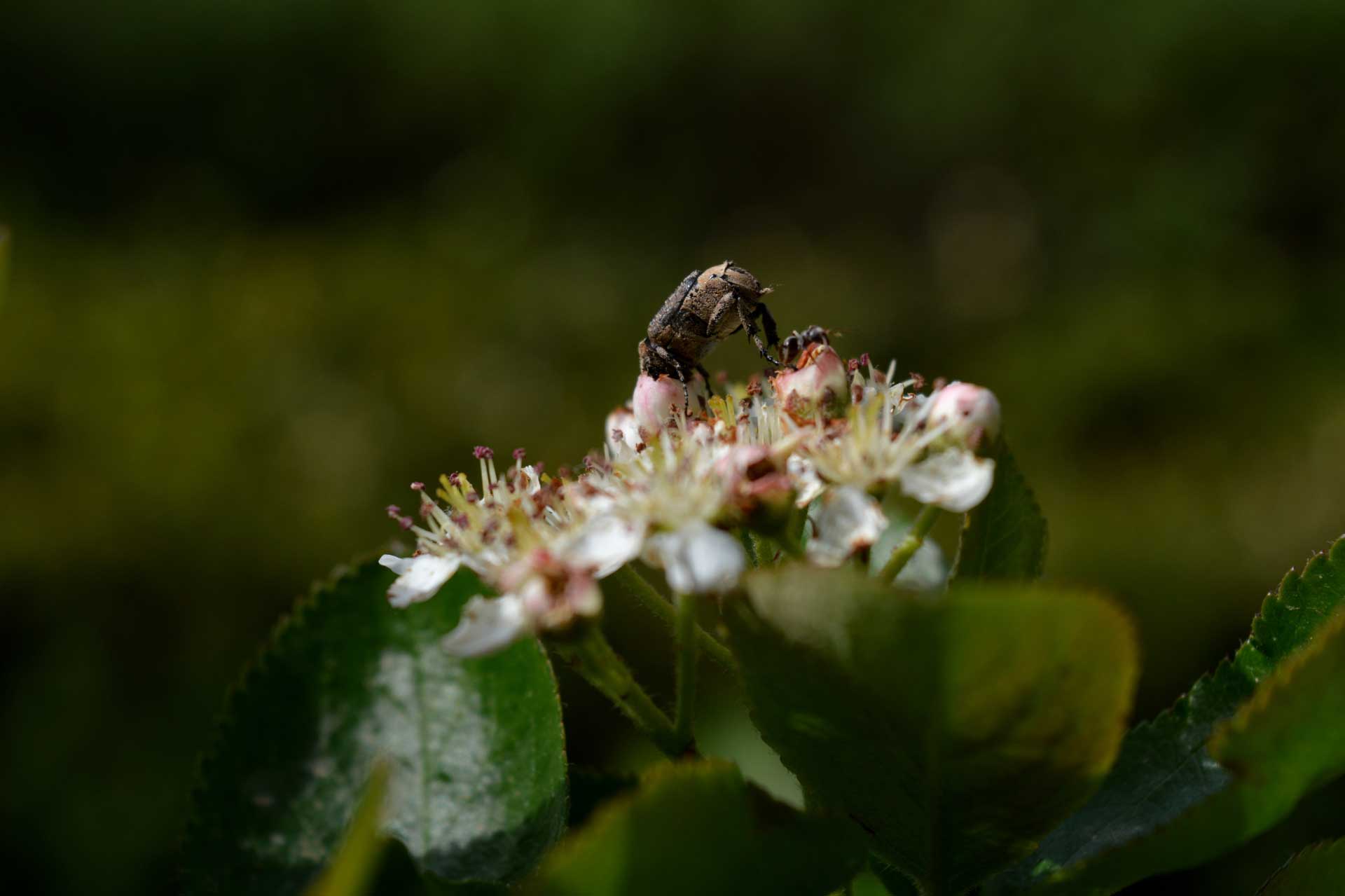
Chokeberry is an easy-to-care for plant native to many regions that provides sustenance in multiple ways. Its fragrant flowers contribute nectar for the pollinators, while its succulent fruits feed passing birds during the growing season. Having this species as part of your garden landscaping will provide a well balanced ecosystem throughout every stage of development.
Canadian Serviceberry
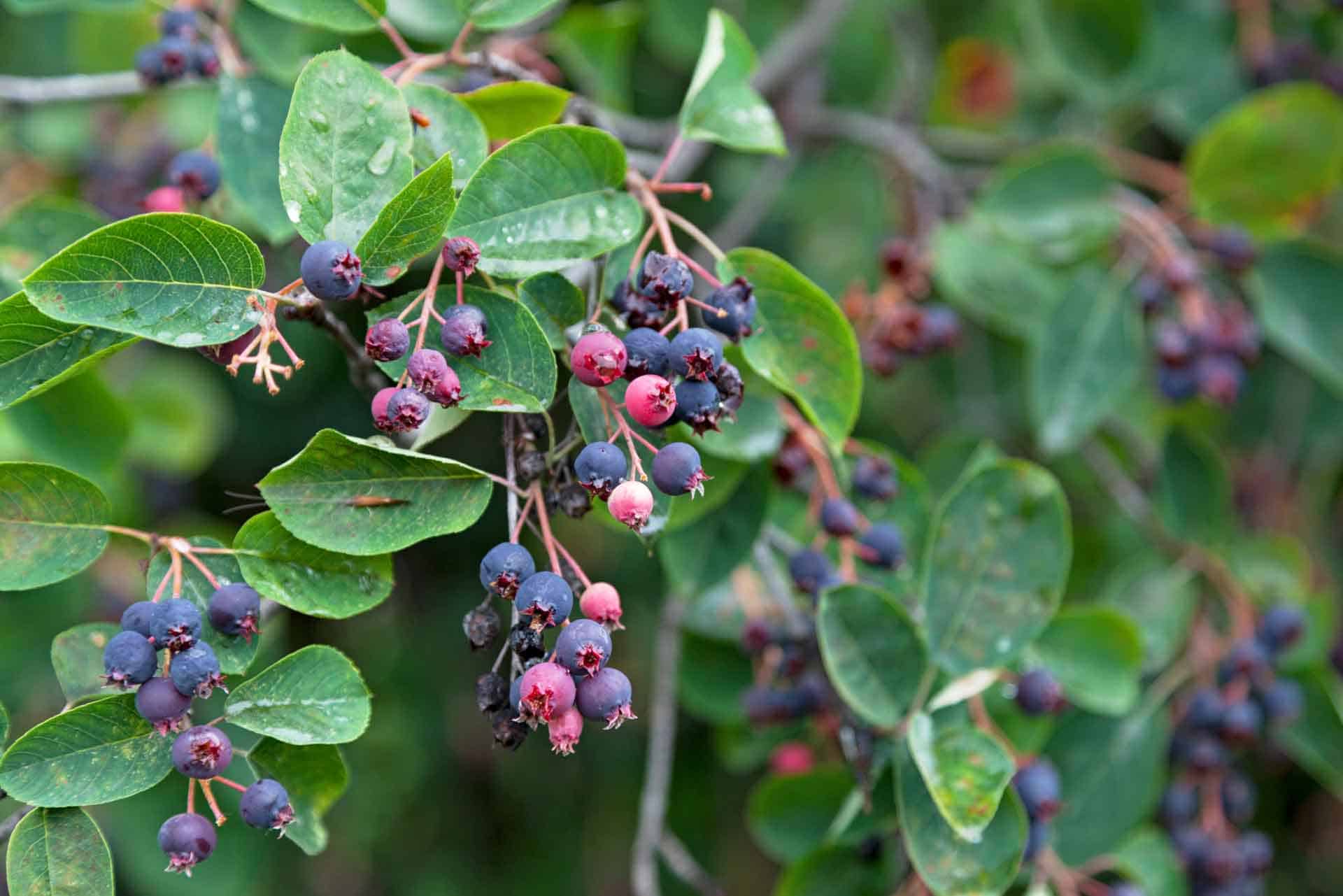
Despite their common name, Canadian serviceberries are native to the eastern US. They are an important early bloomer, offering nectar for early-season pollinators, and later provide berries for birds.
Cedar waxwing and robins are particularly fond of the berries, which are a rich source of nutrition. In consuming the berries, they also help in seed dispersal.
By integrating serviceberries into your garden, you not only attract pollinators and create a visually appealing outdoor space, but you also reap numerous benefits as a gardener.
Designing a Pollinator-Friendly Garden
Designing a garden that aids pollinators goes beyond simply choosing the right flora. Opt for vibrant, eye-catching flowers that bloom at different times to ensure a steady supply of sustenance for these creatures. Grouping these plants together not only enhances the visual appeal of your garden but also makes it easier for pollinators to access the nutrition they need.
Maintaining an organic approach while caring for these flowers is critical, avoiding the use of herbicides and pesticides. These harmful chemicals can upset the delicate balance of your ecosystem. By practicing mindful gardening that prioritizes the needs of bees and other insects, you are fostering a thriving, vibrant ecosystem. This commitment to sustainability ensures the success of each subsequent gardening endeavor!
Supporting Pollinators Beyond Flowers
While planting pollinator-friendly flowers is an excellent start, there are other ways you can make your garden more inviting to these crucial creatures. Providing nesting areas, such as undisturbed patches of soil or sections filled with plant debris and wood, can create suitable breeding grounds. Additionally, water sources like shallow birdbaths or ponds can also attract bees and butterflies, making your garden a more hospitable environment for these vital species.
Minimizing or completely eradicating the use of pesticides is crucial if you want to create a haven for all types of pollinators, especially bees. This is because many pesticides can be lethal to them. If you can, try to abstain from using any harmful chemicals at all! By using a combination of different techniques, you can easily build a thriving ecosystem in your garden that provides everything our buzzing friends need without exposing them to dangerous substances.
Late Season Blooms for Pollinators
As the growing season comes to an end, providing pollinators with food sources from flowering plants becomes critical. Asters, goldenrod and Joe Pye Weed are some examples of late-blooming flowers that can provide nutrition for these essential creatures during bloom time when other types of blooms may be less available.
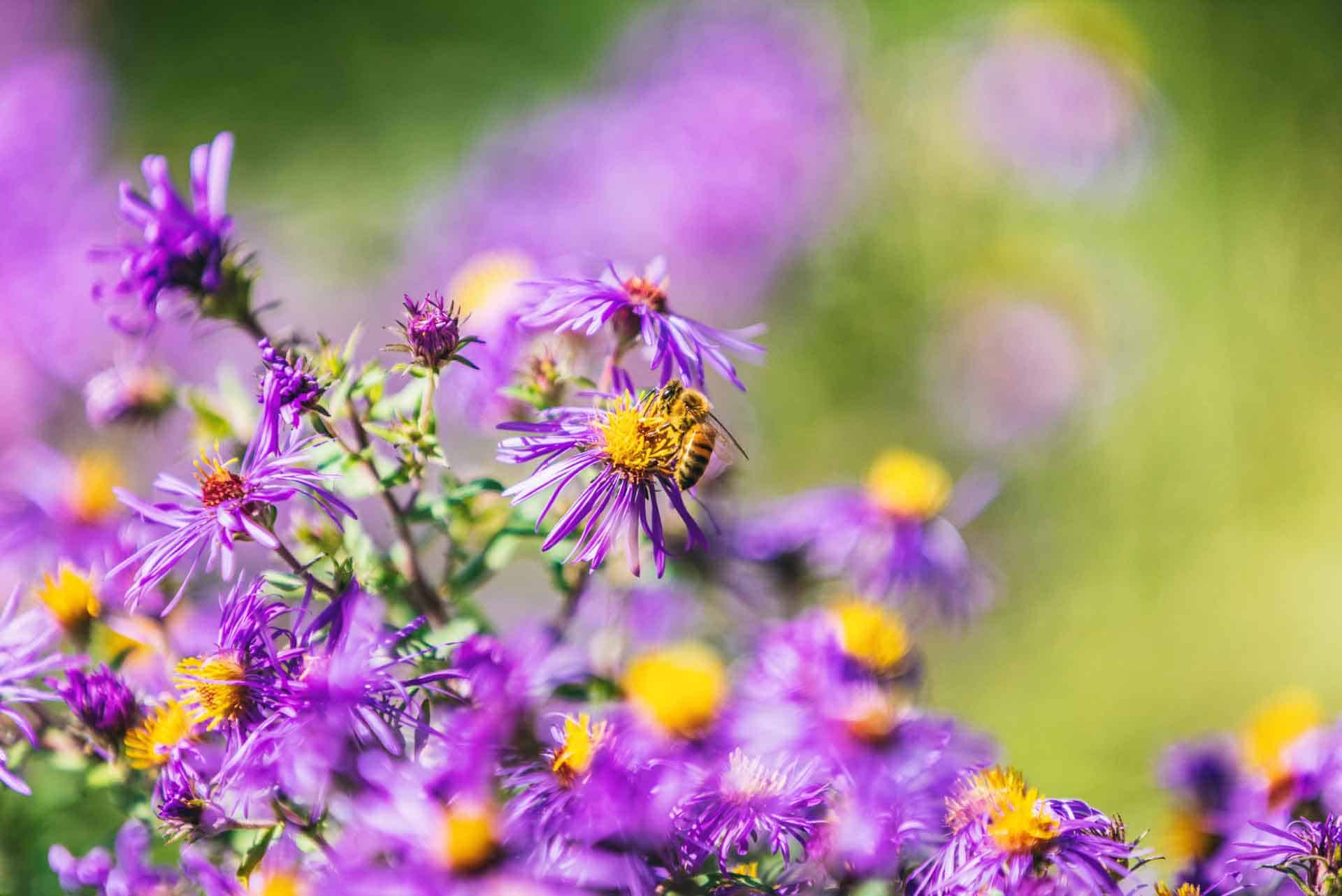
Asters
Asters are great additions to any garden – bringing an amazing splash of color while also providing nectar and pollen for bees, butterflies, and other pollinators. This late-season food source helps maintain healthy populations that sustain the environment’s biodiversity.
These flowers don’t just add aesthetic appeal to your garden, they also play a crucial role in preserving our fragile ecosystems. They provide much-needed nourishment for these creatures, supporting their important work throughout the season!
Goldenrod
Goldenrod comes in a variety of species and is an attractive and beneficial native plant that offers a wealth of nectar to late-season pollinators. In your garden, this flowering species also provides the perfect backdrop of vibrant scenery during the entire growing period. By adding goldenrod to your outdoor landscape design, you can ensure that insect life stays healthy throughout the summer season and beyond!
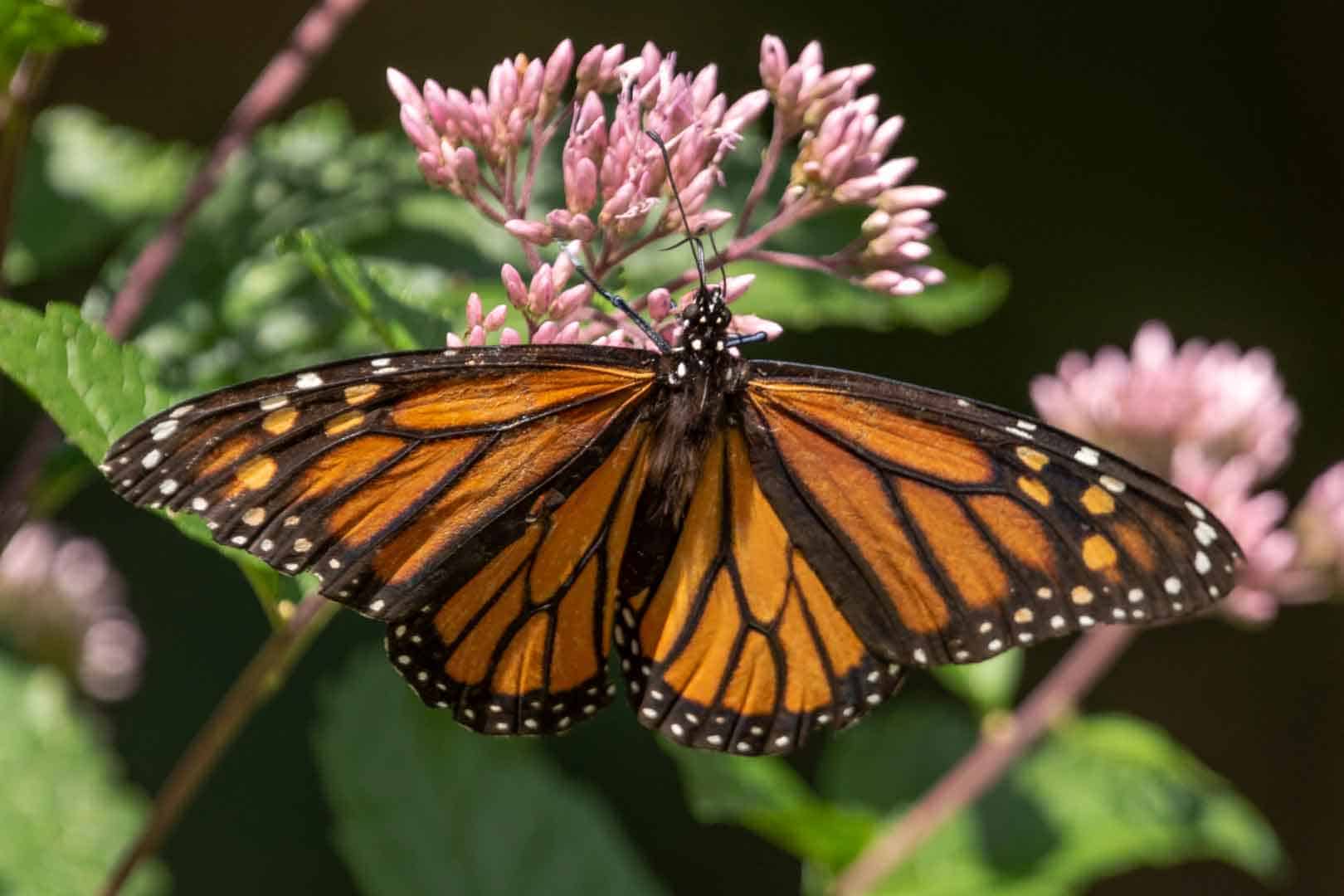
Joe Pye Weed
Joe Pye Weed, a native plant, is a fantastic addition to any garden. Its vibrant flowers serve as an essential food source for bees and butterflies, playing a crucial role in pollination. These plants also support other wildlife during the late season, a critical time for these creatures. By planting Joe Pye Weed, you can attract these beautiful pollinators while simultaneously bolstering your local ecosystem!
Summary
Building a garden that caters to pollinators is a wonderful method to invite and sustain bees, butterflies, and birds, while also enhancing the aesthetic appeal of your space. The range of options to achieve this is vast, from perennial and annual plants to native herbs, shrubs, and trees. By thoughtfully choosing and maintaining your plants, providing nesting and water spots, and reducing the usage of pesticides, you can create a refuge that not only assists these crucial creatures but also contributes to a healthier ecosystem. So, what are you waiting for? Start crafting your pollinator paradise today!w!
Frequently Asked Questions
What are pollinators most attracted to?
Bees and other pollinators are often drawn to flowers that exhibit vibrant colors, particularly white, yellow, or blue. These flowers need to have a strong scent and showcase distinct ultraviolet patterns. Additionally, the high mobility of these pollinators allows them to visit multiple blooms in quick succession.
What kinds of plants do pollinators like?
Establishing a garden that attracts pollinators is a brilliant strategy for promoting environmental sustainability. By doing so, you are directly contributing to the preservation of many species and the overall health of our planet. These pollinators, which include not only bees and butterflies, but also birds and bats, play a crucial role in the life cycle of plants by aiding in the process of pollination. This process is fundamental for plant reproduction and the production of many fruits and vegetables that form a significant part of our diet.
To ensure a consistent food source for these pollinators from early spring to late fall, it’s recommended to choose a variety of flowers that bloom at different times. Trillium, columbine, wild lupine and Virginia bluebells are great examples of native plants whose blooms provide nectar early in the spring. Goldenrods and asters, on the other hand, are excellent choices as they provide bright, nectar-rich flowers that last well into the fall, providing sustenance when other food sources may be scarce.
You can also incorporate trees into your garden, like willows, which are known to be particularly attractive to many species of bees. Trees not only provide an abundant source of nectar and pollen but also offer shelter and nesting sites for many pollinators.
Creating a pollinator-friendly garden is more than just a hobby, it’s a commitment to environmental stewardship. By providing a haven for these vital creatures right in your own backyard, you are playing a direct role in the preservation of biodiversity and the health of our ecosystems!
Why are native plants important for supporting pollinators?
Native plants are key components of a healthy ecosystem, as they have specifically adapted to provide nourishment and living quarters for bees, butterflies, and other pollinators. They form an essential food source for these vital creatures that ensure the survival of many species worldwide. Plus, many pollinators have “specialist” relationships with specific plants that they depend on for food and reproduction. These relationships evolved over thousands of years, and ensure that key invertebrates have access to the plants they depend on is one of the most important things you can do as a gardener.
How can I create a pollinator-friendly garden?
For a garden that welcomes beneficial pollinators, opt for native plants and add colorful blooms to make sure there are flowers during the three main seasons. To get your space ready, create nutrient-rich soil by avoiding using chemical fertilizers or other toxic substances. Doing this will help ensure an inviting environment perfect for these important creatures!
